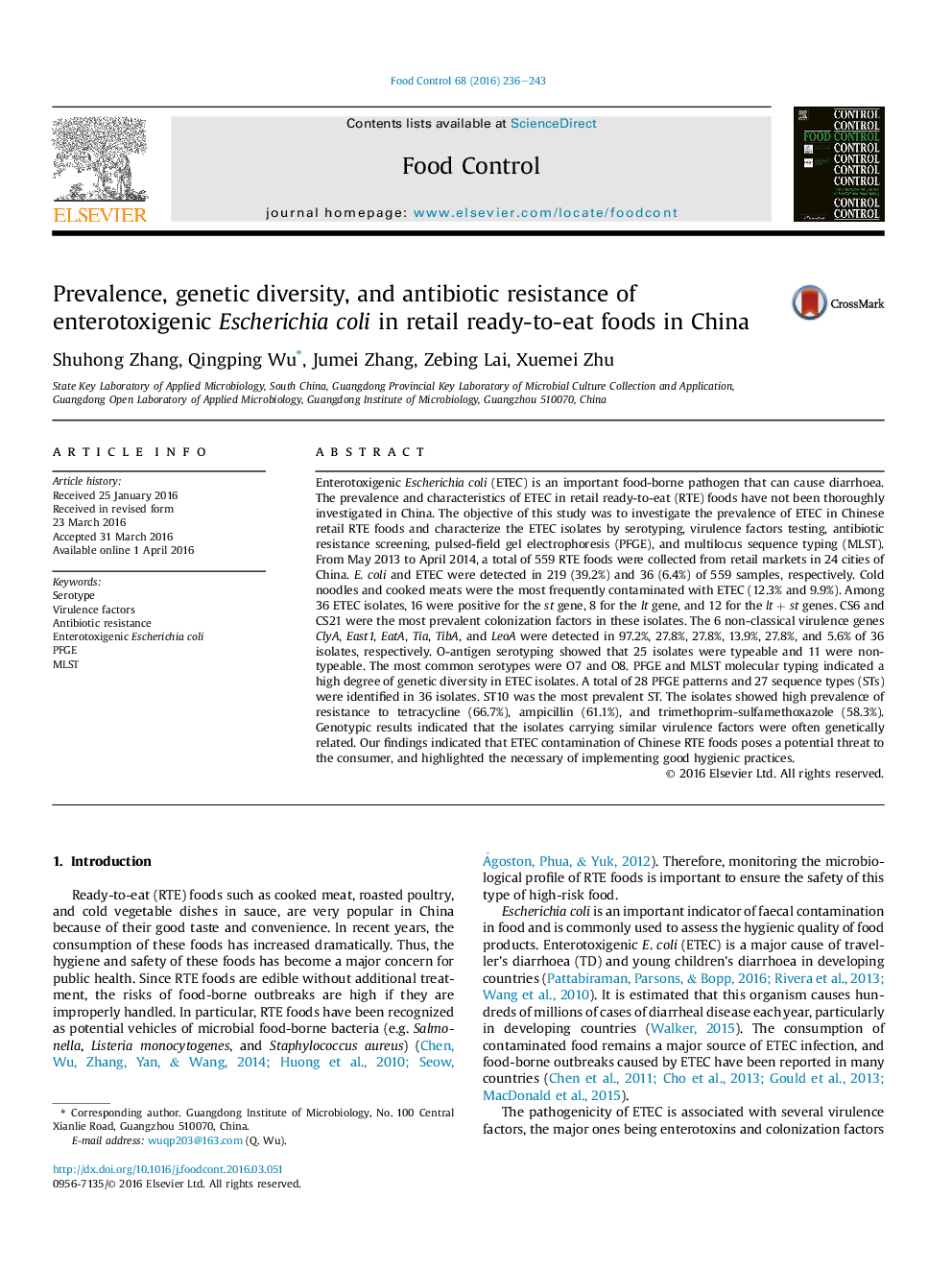| کد مقاله | کد نشریه | سال انتشار | مقاله انگلیسی | نسخه تمام متن |
|---|---|---|---|---|
| 4559048 | 1628394 | 2016 | 8 صفحه PDF | دانلود رایگان |
• High prevalence of ETEC was determined in Chinese ready-to-eat (RTE) foods.
• CS6 and CS21 were the most prevalent colonization factors.
• ST 10 was the predominant sequence type (ST) in ETEC isolates.
• PFGE and MLST molecular typing indicated a high degree of genetic diversity in ETEC isolates.
• Most of the ETEC isolates exhibited resistance to commonly used antibiotics.
Enterotoxigenic Escherichia coli (ETEC) is an important food-borne pathogen that can cause diarrhoea. The prevalence and characteristics of ETEC in retail ready-to-eat (RTE) foods have not been thoroughly investigated in China. The objective of this study was to investigate the prevalence of ETEC in Chinese retail RTE foods and characterize the ETEC isolates by serotyping, virulence factors testing, antibiotic resistance screening, pulsed-field gel electrophoresis (PFGE), and multilocus sequence typing (MLST). From May 2013 to April 2014, a total of 559 RTE foods were collected from retail markets in 24 cities of China. E. coli and ETEC were detected in 219 (39.2%) and 36 (6.4%) of 559 samples, respectively. Cold noodles and cooked meats were the most frequently contaminated with ETEC (12.3% and 9.9%). Among 36 ETEC isolates, 16 were positive for the st gene, 8 for the lt gene, and 12 for the lt + st genes. CS6 and CS21 were the most prevalent colonization factors in these isolates. The 6 non-classical virulence genes ClyA, East1, EatA, Tia, TibA, and LeoA were detected in 97.2%, 27.8%, 27.8%, 13.9%, 27.8%, and 5.6% of 36 isolates, respectively. O-antigen serotyping showed that 25 isolates were typeable and 11 were non-typeable. The most common serotypes were O7 and O8. PFGE and MLST molecular typing indicated a high degree of genetic diversity in ETEC isolates. A total of 28 PFGE patterns and 27 sequence types (STs) were identified in 36 isolates. ST10 was the most prevalent ST. The isolates showed high prevalence of resistance to tetracycline (66.7%), ampicillin (61.1%), and trimethoprim-sulfamethoxazole (58.3%). Genotypic results indicated that the isolates carrying similar virulence factors were often genetically related. Our findings indicated that ETEC contamination of Chinese RTE foods poses a potential threat to the consumer, and highlighted the necessary of implementing good hygienic practices.
Journal: Food Control - Volume 68, October 2016, Pages 236–243
